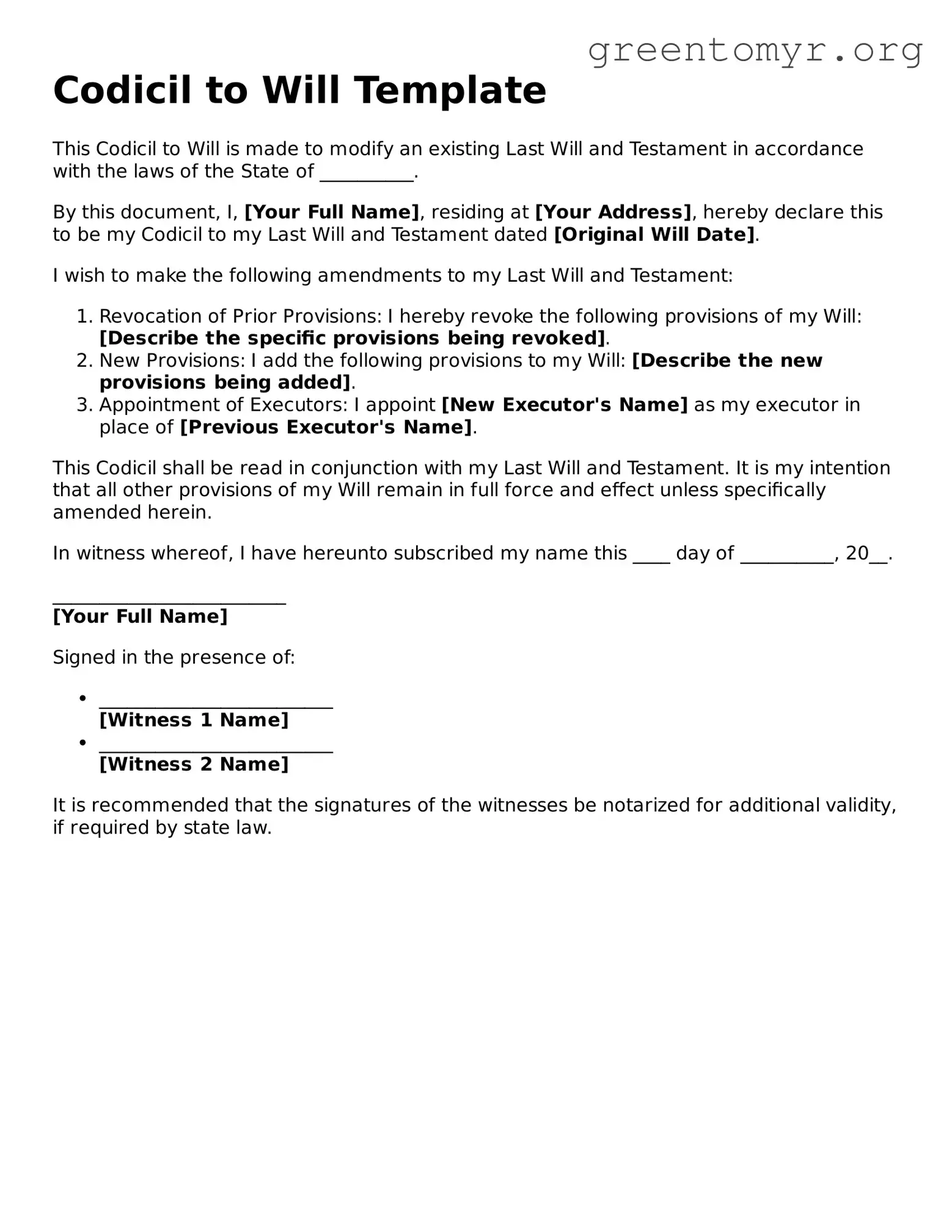Codicil to Will Template
This Codicil to Will is made to modify an existing Last Will and Testament in accordance with the laws of the State of __________.
By this document, I, [Your Full Name], residing at [Your Address], hereby declare this to be my Codicil to my Last Will and Testament dated [Original Will Date].
I wish to make the following amendments to my Last Will and Testament:
- Revocation of Prior Provisions: I hereby revoke the following provisions of my Will: [Describe the specific provisions being revoked].
- New Provisions: I add the following provisions to my Will: [Describe the new provisions being added].
- Appointment of Executors: I appoint [New Executor's Name] as my executor in place of [Previous Executor's Name].
This Codicil shall be read in conjunction with my Last Will and Testament. It is my intention that all other provisions of my Will remain in full force and effect unless specifically amended herein.
In witness whereof, I have hereunto subscribed my name this ____ day of __________, 20__.
_________________________
[Your Full Name]
Signed in the presence of:
- _________________________
[Witness 1 Name]
- _________________________
[Witness 2 Name]
It is recommended that the signatures of the witnesses be notarized for additional validity, if required by state law.
